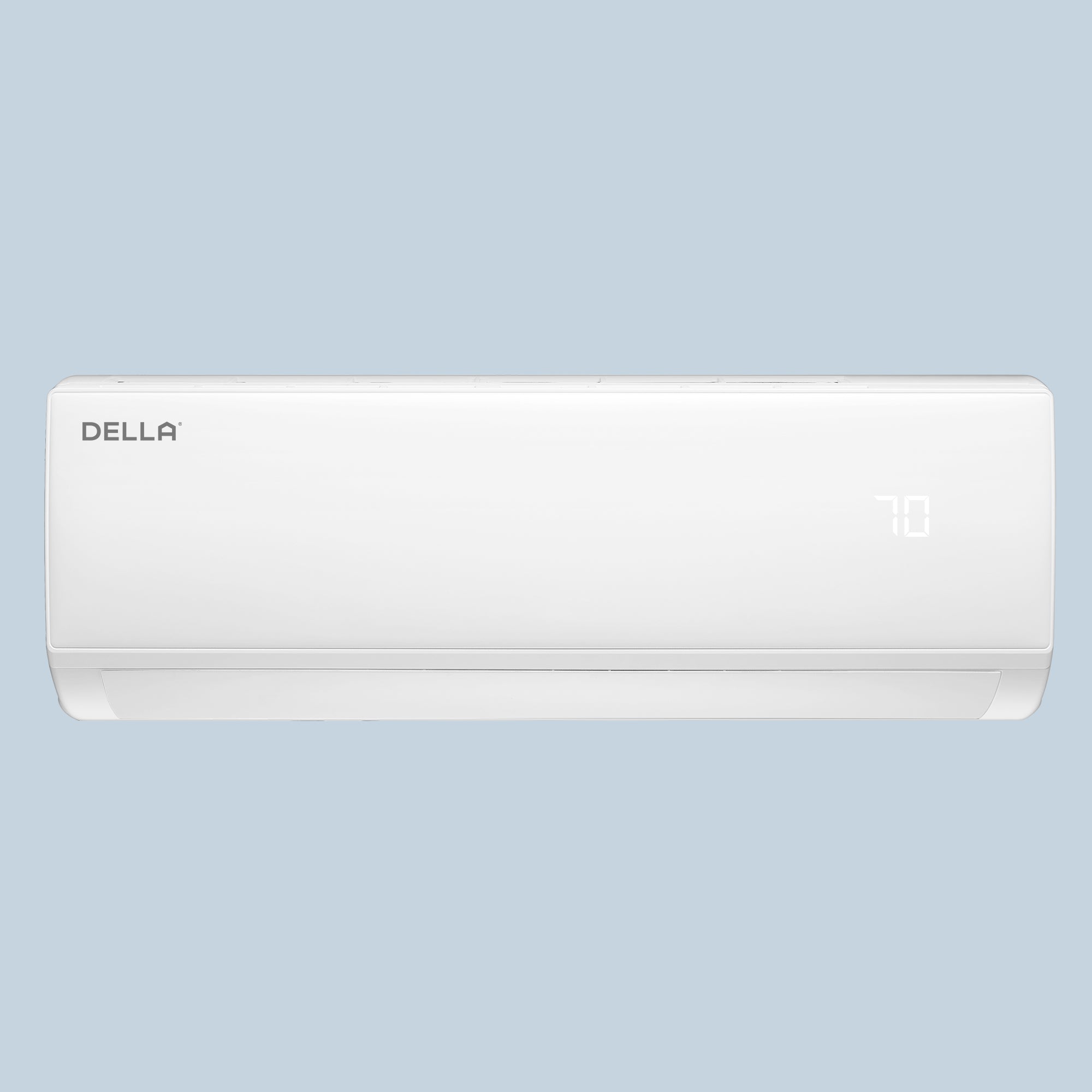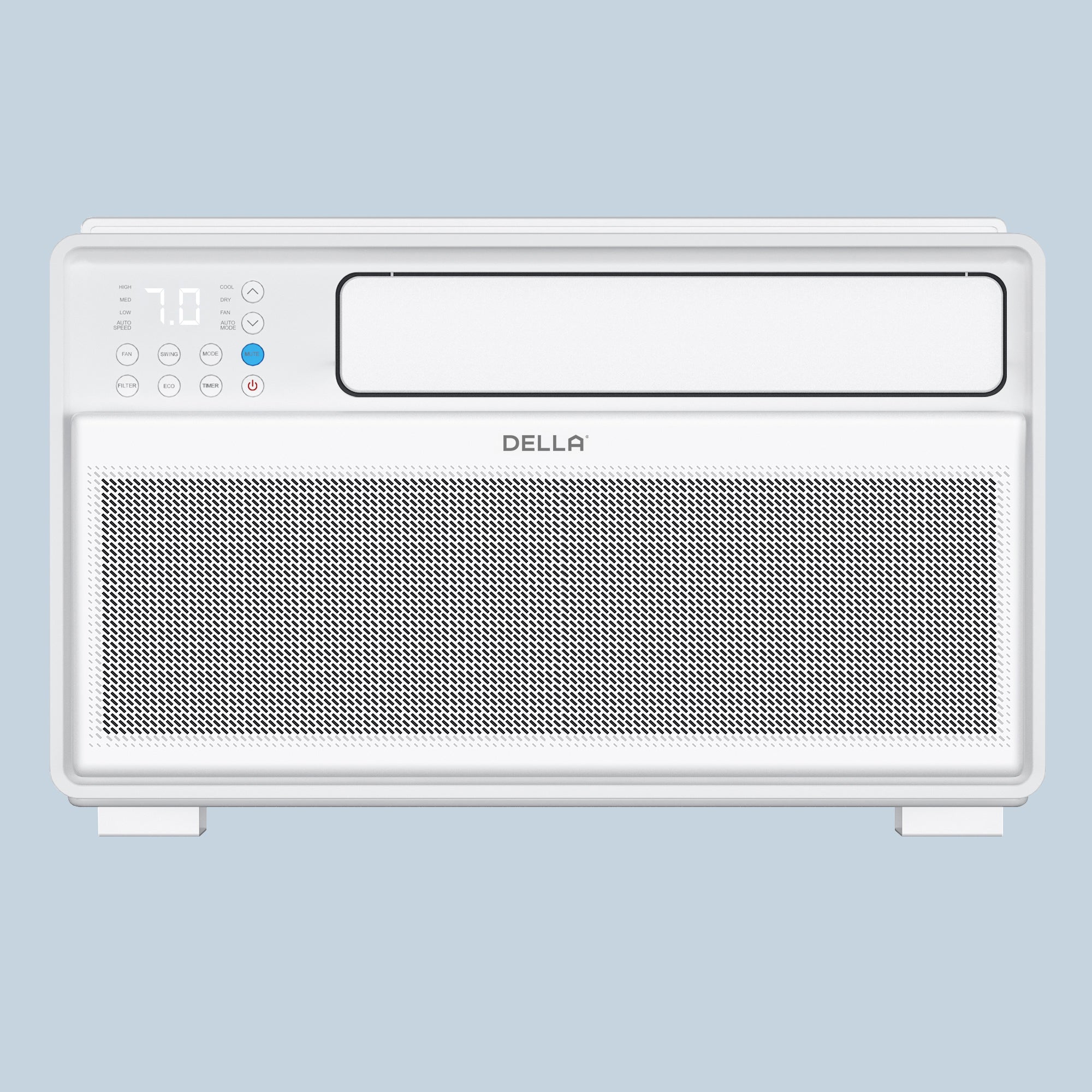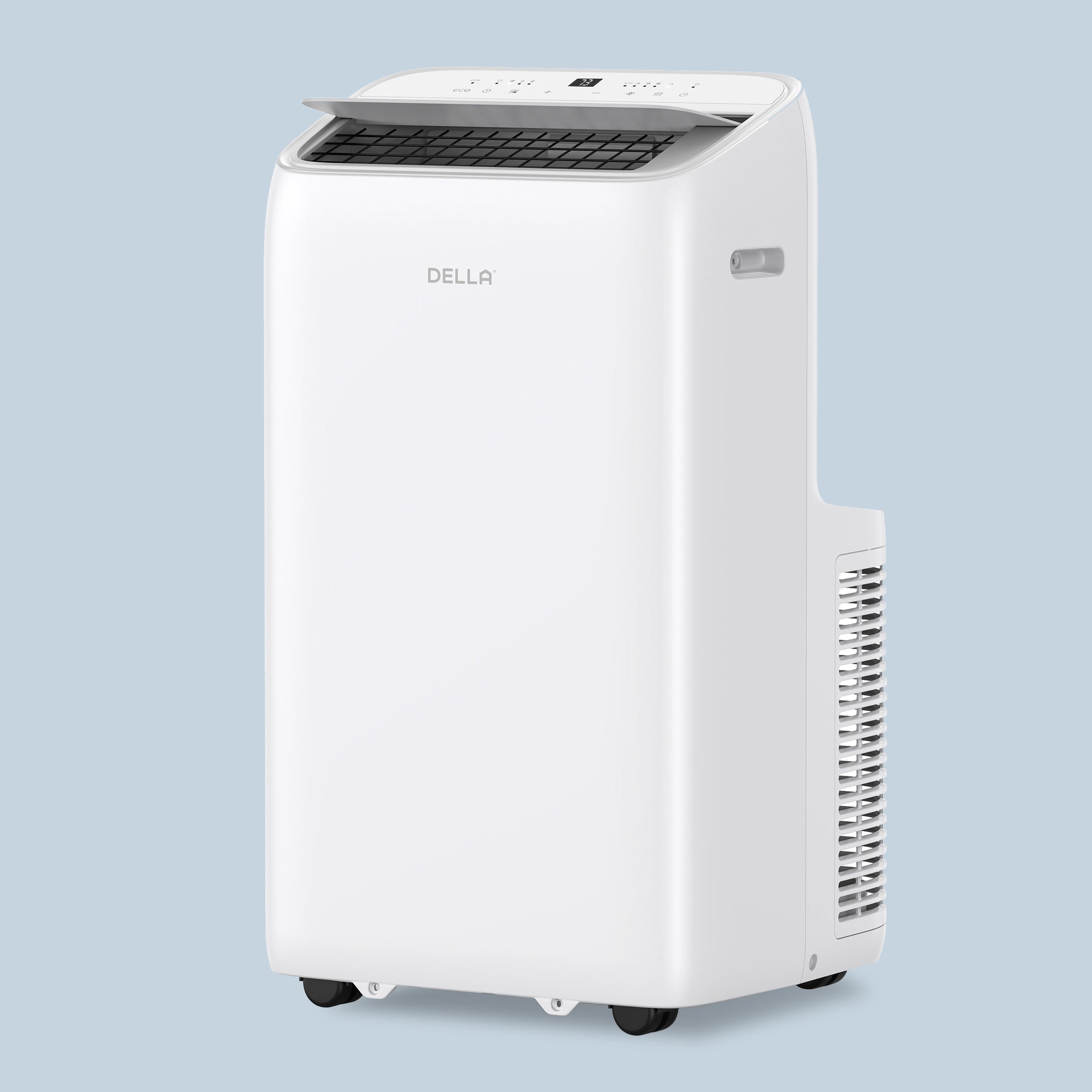Looking to lower your energy costs and shrink your carbon footprint? Della’s Solar Mini Split AC units provide an easy solution.
These solar-powered units use sunlight to heat or cool your home, drastically reducing dependence on grid energy. They’re energy-efficient, ductless and operate off-grid or on—great for homes, cabins, or tiny houses.
Solar panels convert sunlight to electricity. This energises the mini-split’s compressor and fan. In off-grid setups, a battery stores excess energy during nighttime or cloudy days.
Della’s systems employ inverters to adjust the use of power according to the available solar energy. That enables them to work in harmony with solar panels.
Keep reading!
Can a Mini Split Be Powered by Solar?
The short answer: Yes! Newer mini-split systems, such as those made by Della, are designed to work efficiently with solar energy. Here’s how it works:
Mini Split Basics
Mini splits run on electricity to drive their fans and compressors. You can run your mini-split directly by hooking up a solar panel array to an inverter (which transforms DC solar energy to AC electricity). Off-grid systems include a battery storage system, allowing operation without sunlight.
Key Components for Solar Integration
Solar Panels: Capture sunlight and convert it to electricity.
Inverter: Takes the DC power from the panels and converts it to AC power, which the mini-split requires.
Battery Storage (Optional): Stores excess energy at night or in cloudy weather.
Charge Controller — Regulates energy flow to keep batteries safe.
Della’s mini splits, such as the 9000 BTU WiFi-Enabled 19 SEER2, are an excellent match for solar energy systems due to their high Seasonal Energy Efficiency Ratio (SEER) ratings and inverter-driven compressors that modulate energy usage.
Benefits of Powering Mini Splits with Solar Power
What are the advantages of using solar panels for a mini-split system? Solar energy improves these systems in numerous ways.
Massive Cost Savings
Solar power reduces electricity bills. Using less grid power means spending less money each month. Many governments also rebate for putting in solar. For example, there is a tax credit in the U.S. that covers 30% of the cost of your solar installation. This allows for a reduction in upfront costs.
Energy Independence
Solar allows you to be off the grid. This is fantastic for princesses, tiny homes, or places with poor energy. If you have solar batteries, your mini-split will continue to function even if the power grid goes down. You’re warm or cool no matter what happens outdoors.
Environmental Effects
Solar power is environmentally friendly. It doesn’t pollute the air. That helps beat climate change. Della’s mini-splits also consume less energy than older systems. Their 19 SEER2 models require up to 30 percent lower power consumption. This translates into less waste and a lower carbon footprint.
Installation Is Quiet and Flexible
Mini-splits don’t use ducts. This means that they are easy to put up anywhere. You sidestep big, loud ductwork. You can also set different rooms to different temperatures. Keep one room a little cooler and another a little warmer. It’s silent and meets your requirements.
Solar mini-splits save money, work anywhere, help the planet, and fit your lifestyle. They are an excellent option for contemporary homes.

How Do You Run Della’s Mini Splits with Solar Power?
It’s easy to run a mini-split with solar power. Here’s how to set it up.
Step 1: Determine Your Power Needs
Your first step is to determine how much electricity your mini-split consumes. For instance, Della’s 9000 BTU unit requires approximately 600–800 watts per hour. If you run it 8 hours a day, that’s 4.8–6.4 kWh daily. This knowledge enables you to create a plan for your solar system.
Step 2: Plan Your Solar Set-Up
Then, select your solar panels and batteries. A 400-watt solar panel that receives 4–5 hours of sunlight produces 1.6–2 kWh of energy per day. You may need 4–5 panels to supply your mini-split. Include batteries for storing excess energy on nights or cloudy days. Using 5 kWh, the mini-split can run for 8 hours without sunlight.
Step 3: Install It All
Install solar panels on your roof or a ground rack if you connect them to an inverter, which converts solar energy into power that your mini-split can use. Include a charge controller to protect the batteries. Connect the inverter to your Della mini-split and the battery bank. Indeed, this allows the system to run continuously for 24 hours a day.
Step 4: Maintain Good Functioning
Monitor your energy use with Della’s WiFi app. It also allows you to conserve power and troubleshoot quickly. Wash the solar panels a few times yearly to prevent grime from obstructing the sun. Inspect wires and connections to ensure that nothing is loose or broken.
Following these steps, you can keep your home comfortable with your solar-powered mini-split. It harnesses Free Energy from the Sun, lowers your bills, and it even works during power outages. Have the proper layout from the start, install it properly, and enjoy cool or warm air when you want it.
How Many Solar Panels Do I Need to Run a Split Air Conditioner?
Factors to Consider
The number of solar panels depends on three main factors:
Mini Split’s Wattage:
Example: A 9000 BTU unit (like Della’s model) uses ~800 watts per hour.
Daily Usage:
Running it for 8 hours/day requires 6.4 kWh daily (800 watts × 8 hours).
Sunlight Availability:
Areas with five peak sun hours daily need fewer panels than cloudy regions.
Example Calculation
Here’s how to calculate panel needs for a 9000 BTU mini-split:
Daily Energy Requirement: 6.4 kWh (8 hours × 800 watts).
Panel Output: A 400-watt panel generates ~2 kWh/day in 5 hours of sunlight (400 watts × 5 hours).
Panels Needed:
6.4 kWh ÷ 2 kWh/panel = 3.2 panels.
Round up to 4 panels.

Real Example of Solar Mini Splits: Della’s 9000 BTU Model
The Della 9000 BTU solar power mini split is a standout choice for solar integration:
Cools/Heats Up to 400 Sq.Ft.: Ideal for single rooms or small spaces.
Inverter Technology: Adjusts power usage to maintain efficiency.
Pre-Charged Installation Kits: Simplified setup for DIYers.
WiFi Control: Adjust settings remotely via smartphone.
Solar Setup: Pair with 4–6 solar panels and a 5 kWh battery for seamless off-grid operation.
Should You Use Solar Power to Run Mini Splits?
Whether solar makes sense for your mini-split will depend on finding the right balance of budget, location, and priorities.
Short-Term and Sustainability
Solar costs can outweigh electricity costs in the long run ($10,000–$15,000 fully installed), but you will pay less for electricity in the long term. Tax incentives and rebates can help offset up-front costs. Solar energy embraces sustainability, significantly reducing carbon emissions and contributing to essential green living practices.
Initial Investments and Weather Constraints
The primary obstacle is upfront costs. Solar power depends on sunlight, too, which makes it less efficient in cloudy regions. In low-sun areas, more panels or batteries may need to be purchased, making the investment even more expensive.
Increase Home Value
Solar homes typically command buyers willing to pay a premium for energy-efficient upgrades. Solar mini-splits enhance your home's modern appeal and showcase your commitment to sustainability.
Who Gains the Most?
Solar is a win-win for green-minded homeowners and off-the-grid places like cabins or tiny homes. It’s perfect in areas with expensive electricity — or those prone to outages- and gives you peace of mind.
Solar makes brilliant sense if you intend to live in your home for several years and value sustainability. For short-term needs or low-sun climates, use regular power. Solar-powered mini-splits offer freedom, savings, and a cleaner future, making them an ideal option for customers willing to invest in their comfort and consider the planet's perspective.
Conclusion
Della’s Solar Mini Splits offer a more brilliant, greener way to heat and cool your home. Solar energy gives you freedom from traditional energy sources , reducing costs and providing clean energy to the world. Whether you choose a single-zone system to cool or warm a bedroom or a multi-zone system to comfort your home, combining Della’s efficient mini splits with solar energy is a win-win.
Are You Ready to Switch? Check out Della’s mini split heat pumps and single-room AC units to find yours. For more limited-time deals, visit our air conditioner sale now!
Read More:
8 Steps to Install a Mini Split Air Conditioner Easily
What Size of Mini Split Air Conditioner Do I Need? 2025 Updated
6 Best Ductless Mini Splits: 2024 Buyer's Guide
How to Clean Your Mini Split AC? Here's What You Have to Know
Cost to Install Mini Split AC System in 2025








LEAVE A COMMENT
All comments are moderated before being published.
This site is protected by hCaptcha and the hCaptcha Privacy Policy and Terms of Service apply.